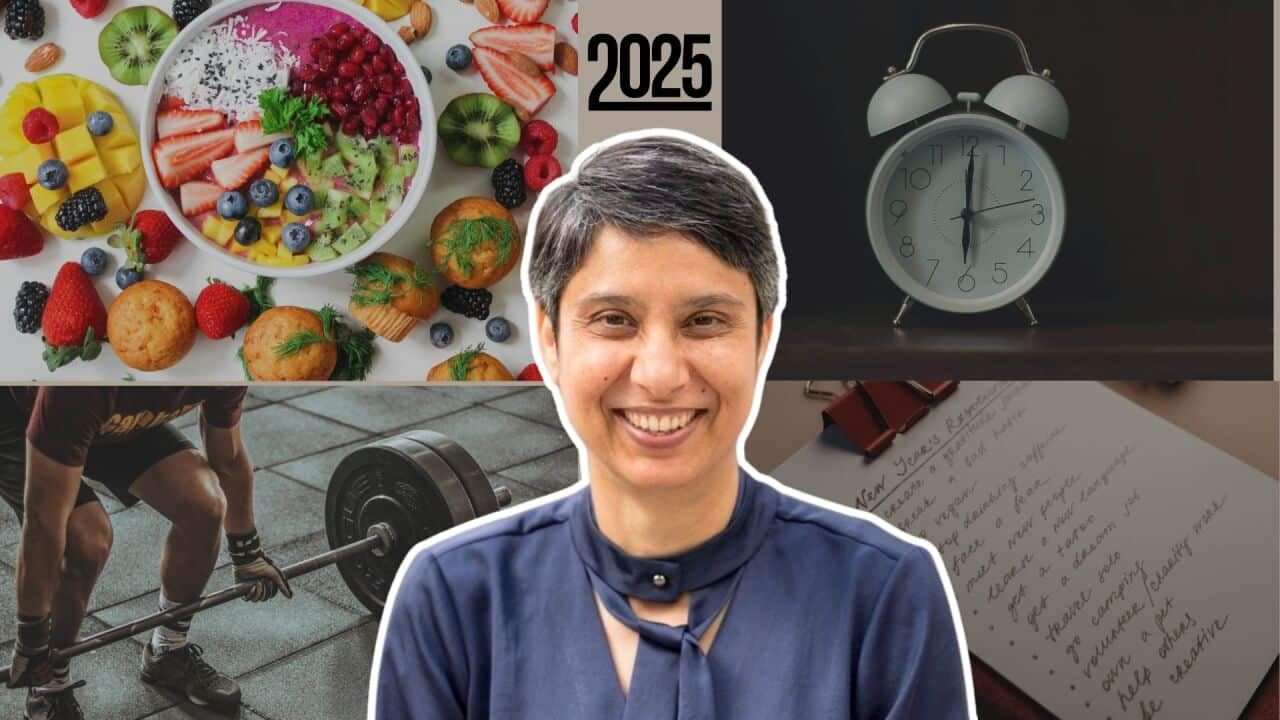Key Points
- Australia offers easier permanent residency pathways for skilled migrants.
- Post-study work rights and unlimited work hours for international students.
- Faster processing for skilled visa applications to continue in 2023.
Some of the most significant changes to Australia's immigration pathways in recent years took effect in 2022.
Migration program shake-up:
The Albanese government lifted the annual permanent migration intake to 195,000 places in its 2022-23 migration program, opening doors to an extra 35,000 migrants to plug the country’s pressing skills shortages and reduce reliance on temporary workers.
Before COVID hit, the Morrison government capped the total intake at 160,000 a year, but migration dropped into net negative territory in the two years during the pandemic, leading to a cumulative loss of 600,000 temporary visa holders.

Federal Opposition Leader Anthony Albanese Source: AAP / AAP Image/Dan Himbrechts
“We can’t just have this over-reliance on temporary labour. And there are so many professions, whether it’s nursing, whether it’s engineers, whether it’s chefs, where we’ve had skills shortages for a long period.
“It makes no sense to bring people in, have them for a few years, then get a new cohort in to adapt to the Australian work environment,” the prime minister said in a press conference at the Jobs and Skills Summit.
Boost for skilled migration:
Under the lifting of the cap, the number of places in the Skilled Stream has gone up significantly from 79,600 to 142,400, with the regional category (subclass 491) poised to get 34,000 permanent migrants and states and territories nominated (subclass 190) 31,000 places, 20,000 more than the previous program year’s projections.
Minister of Home Affairs Claire O’Neil said these changes to the skilled stream would allow more qualified professionals to enter the workforce in the ongoing program year.
“This will help to directly meet pressing skills shortages and assist migrants to build their lives in Australia, and invest in their and their families’ futures,” she said in a press release in September.
Explaining the impact of these changes on Indian applicants, Melbourne-based migration agent Navjot Kailay said in his line of work, he has witnessed an approval rate for applicants at 65 points, something he said was "unimaginable" a year ago.
"The overall trends look very positive for skilled migrants. For the last three rounds, we’ve seen a huge surge in invitations. On 8 December 2022, the Department of Home Affairs issued 35,000 invitations which show how desperate the government is to address the skill shortages through this selection," he said.
Meanwhile, the quota for Business Innovation and Investment Visa program (subclass 188) has been reduced to 5000, compared to 13,500 last year.
The number of places allocated to the Global Talent (Independent) category, popularly known as the , was also slashed to 5,000, making it more challenging for highly skilled individuals to secure a place in the program.
Australia's migration future:
The Labor government has also announced a comprehensive review of the migration system to ensure it better meets existing economic challenges and sets a clear direction for the coming decades.
In its submission to the federal government’s review, the Grattan Institute, a public policy think tank, said the country needs to start by rethinking its objectives for skilled migration.
Permanent skilled migration must select younger, skilled talent to stay in Australia long-term, not address short-term skills shortages.Grattan Institute report
“Temporary skilled migration helps fill shortages, but since it also provides much of the applicant pool for permanent skilled migration, it, too, should target high-skilled migrants,” Grattan Institute said in its.
PMSOL abolished: Priority processing for healthcare workers and teachers:

Visas for healthcare workers and teachers are now being assessed within days after the government altered the way it prioritises skilled visa applications. Source: SBS
In a statement to SBS News, a Department of Home Affairs spokesperson in December said, “these applications are now being assessed in three days.”
Criteria relaxed for state-nominated visas:

New South Wales changes visa conditions for permanent residency visa Source: AAP / AAP Image/Dean Lewins
With the highest number of state allocations under the state-nominated program, the New South Wales government recently decided to eliminate requirements related to work experience and minimum points scores for its skilled-nominated visa category.
“Previously published points scores and work experience guides for subclass 190 have been removed due to increased availability of the Skilled Independent visa (subclass 189) by the Department of Home Affairs,” the NSW government’s website
NSW has also set up an office in Mumbai, the commercial capital of India, to attract more migrants and international students, and promote investment and trade opportunities.
Sydney-based migration agent Rajwant Singh said NSW's move to relax the criteria for permanent residency pathway has come as a huge relief.
"Removing the point limit and experience criteria has been a huge relief for many applicants, especially for those who have been waiting for their chances for the last 5 to 10 years," he said.
With 11,570 places for subclass 190, 3,400 for subclass 491 and 170 business visa places, Victoria has expanded its eligible list of occupations to plug skill gaps in the state.
“All occupations on the relevant Department of Home Affairs occupation are now eligible, and applicants are no longer required to be using STEMM skills and working in a target sector to apply,” the state government’s website states.
The state is also allowing applicants living overseas, as well as those already living in Victoria, to apply for its visas.
Partner visas are no longer subject to a ceiling:

Partner visa delivery shifts to a demand-driven model in program year 2022-2023 Credit: Wikipedia Commons/Yogita/CC BY 3.0
The Partner visa category is estimated to deliver 40,500 visas, processing for which will move to a demand-driven model.
Mr Kailay said the move will help reduce the visa backlog and processing times for many applicants, some of whom have been waiting for years to get their grants and reunite with their partners.
"Granting Partner visas on a demand-driven basis will provide the flexibility to meet the demand for Partner visas in a given program year and assist in mitigating future growth pipeline," he said.
Mr Kailay added that migration agents are waiting on clarity over processing times for India.
"In 2023, we expect some clarity on the department’s criteria as different timelines apply for different countries, for example Partner visa applications from Asian countries like India may take more time compared to a European nation for an approval."
Incentives for international students:

Australia offers unlimited work hours and post-study work rights for international students.
Mr Singh said he is hopeful that 2023 would be a great year for overseas students. However, he added that some streamlining is required to compete with other global study destinations.
"I believe the waiting times for student visa approvals are way too much when we compare it to other countries like Canada and the UK.
"Sometimes even educational institutes take 3 to 4 months to issue offer letters, which I think should change if we really wish to see the international student market boom to pre-pandemic levels," he said.
As part of the ‘historic’ Australia-India Economic Cooperation and Trade Agreement (AI-ECTA) that came into action on December 29, the government has proposed to increase the duration of post-study work rights for Indian students to strengthen the pipeline of skilled labour. The timeline for the implementation of these arrangements will be announced in 2023.
For the first time, the government has also committed to including India in its Working Holiday program by promising Work and Holiday visas (subclass 462) to 1,000 Indian citizens between the age of 18 and 30 years for 12 months, if they meet the eligibility criteria.
A DHA spokesperson said the proposed arrangement would be implemented within two years of the ECTA’s entry into force.
Migration agents claim the Work and Holiday visa provision has generated ‘massive’ interest in the Indian market.
But Phil Honeywood, CEO of the International Education Association of Australia, feels this pathway cannot address the country’s long-term skills needs.
Yes, working holiday visas have a role to play, but they are temporary by nature.Phil Honeywood, CEO, International Education Association of Australia (IEAA)
Overall faster visa processing:
Newly released government data indicates that the Department of Home Affairs has cut down the waiting list to just 600,000 after inheriting a visa application backlog of more than 950,000 applications.
Earlier this month, Immigration Minister Andrew Giles said that by ramping up processing times and hiring an additional 400 staff, “I’m proud to say that we have now processed over 4 million visas since coming to Government.”
Click on this audio icon to listen to the interviews in Punjabi.
LISTEN TO

Australian visas 2023: Easier permanent residency for skilled migrants, incentives for international students
SBS Punjabi
30/12/202222:15




